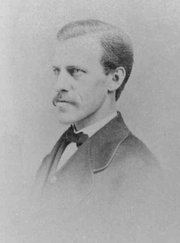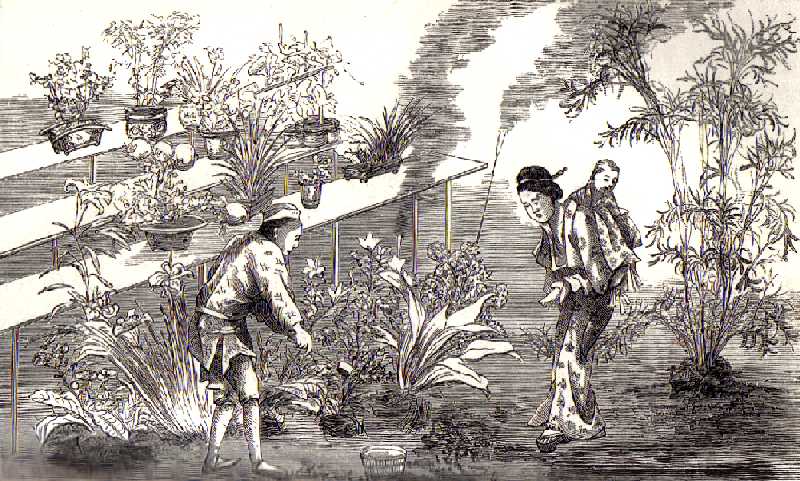| William Elliot Griffis
(1843-1928) was born in Philadelphia, Pa.
and in 1850 saw the launching of the U.S.S. "Susquehanna," (later the flagship of Commodore Perry)
from alongside of his father's coal wharf, on the Delaware River.
He saw the first Japanese Embassy in Philadelphia ten years
later. From 1866-70 taught Ise and Numagawa, nephews of Yokoi
Heishiro, the first two Japanese students in America,
and also several of the scores of Japanese young men, who flocked to New
Brunswick, N. J., during the years 1868-70. In 1870 Griffis
was called "To organize schools on the American principle and teach the
natural sciences." He accepted the appointment, crossed the
continent on the newly finished railway and sailed from San Francisco,
December 1. He arrived at Yokohama before year's end, the first
of the O-yatoi
called out from foreign countries, according to the
Imperial "Charter Oath" of the Meiji Tenno (Emperor) to "seek for
learning and talent throughout the world, to relay the foundations of
the Empire." After seven weeks in Tokyo, teaching as a volunteer
in the Imperial University, and meeting many prominent men--the leading
daimios, Counts, Soyeshima, Okuma, etc.-- Griffis left by steamer for
Kobe and Osaka. In March 1871 he began teaching science in the
Castle and equipped the first chemical laboratory in Japan. From
1872-74 he taught chemistry and physics in the Imperial University, and
mental science as a volunteer. He made many journeys in the
interior during vacations and holidays. After four years of educational service, several audiences with the Emperor, summer and holiday explorations, etc., Griffis left Japan for America in July 1874. During the next fifty-two years, he spent much time in interpreting Japan to America, with voice and pen. He began lecturing, writing, correcting errors and misstatements about Japan, in school and text books, encyclopedias, newspapers and periodicals in America and England. He wrote hundreds of articles, long or short on Japan and the Japanese for six encyclopedias, delivered three thousand lectures or addresses in schools, colleges, universities or before clubs and general gatherings. He lectured singly or in courses, with 1,500 stereoptican lantern slides for illustrations. Griffis was decorated by the Emperor in 1908 with the insignia of the Fourth Class Order of the Rising Sun. At the office of foreign affairs, in 1926 he received the 3rd class decoration of the Order of the Rising Sun--the highest awarded to foreigners. The following year he had an audience with the Emperor in the Imperial Palace. During this visit to and in the Japanese Empire, Griffis spoke about two hundred and fifty times to various organizations. Besides writing introductions to books on Japan by native and foreign authors, and numerous pamphlets, he wrote the following books: The Mikado's Empire (1876, 12 ed); Japanese Fairy World (1878); Asiatic History: China, Korea and Japan (1880, Chautauqua); Corea: Without and Within (1880); Corea: The Hermit Nation (1880); Matthew Calbraith Perry, A Typical American Naval Officer (1887); Honda: The Samurai (1889); Japan: In History, Folk-lore and Art (1891); The Religions of Japan (1894); In the Mikado's Service (1900); Dux Christus: An Outline Study of Japan (1903); The Japanese Nation in Evolution (1907); The Mikado: Institution and Person (1914); and Japanese Fairy Tales (1921).  |
